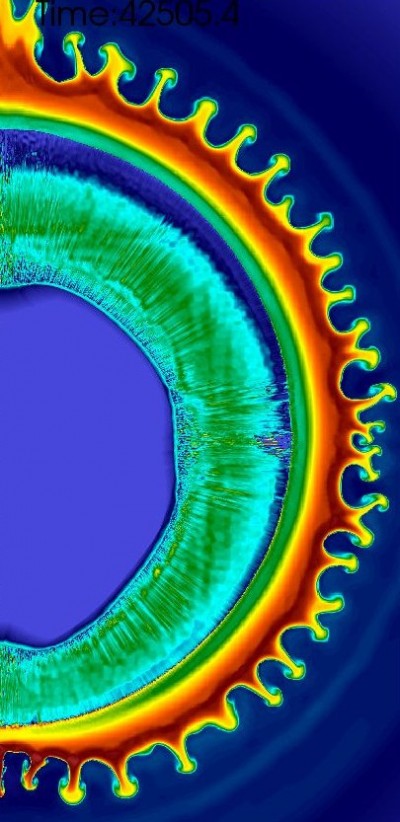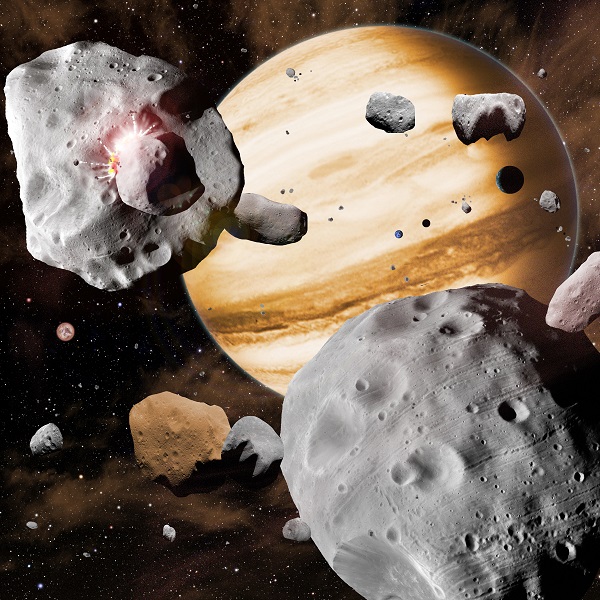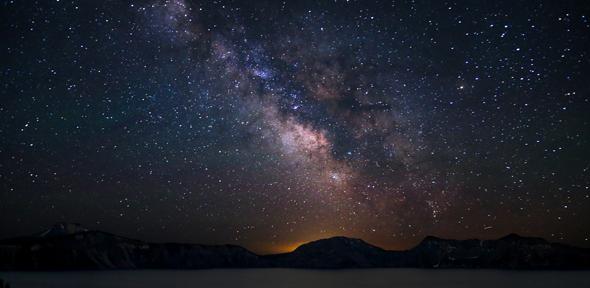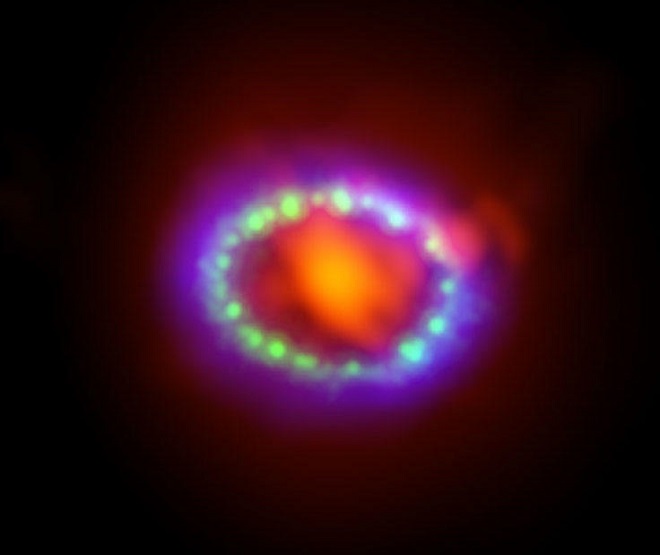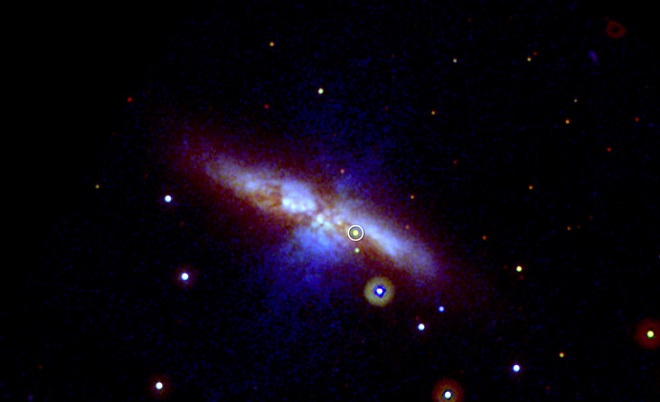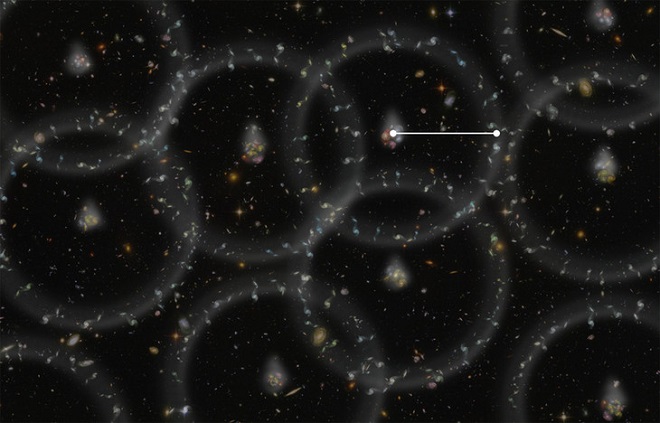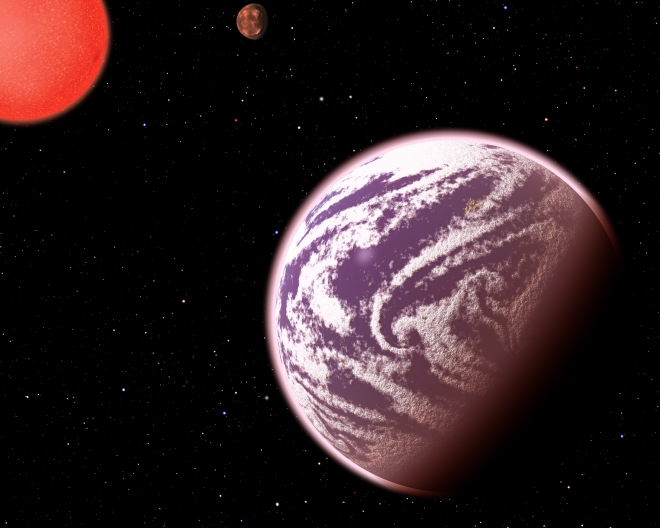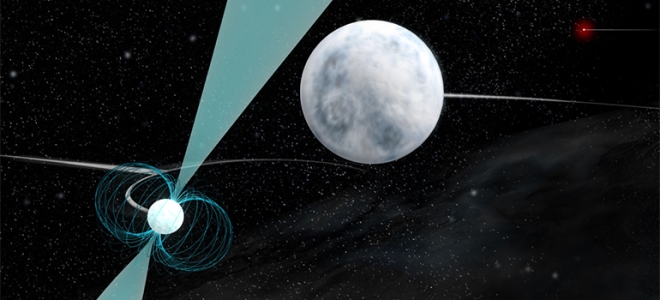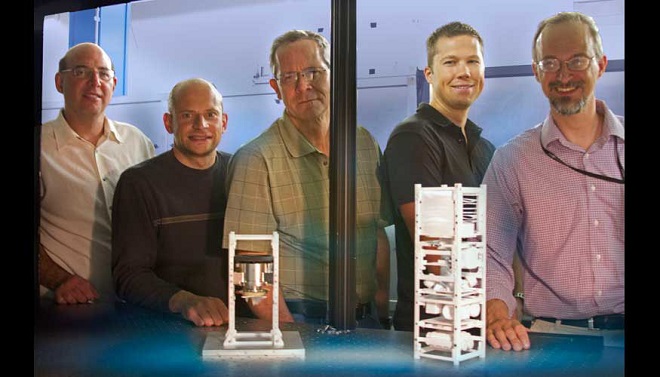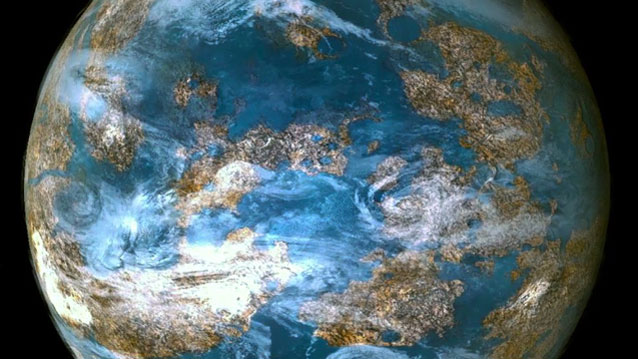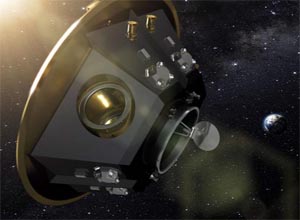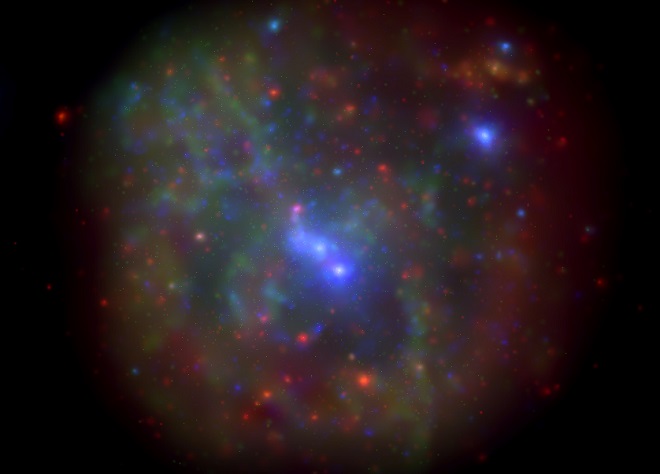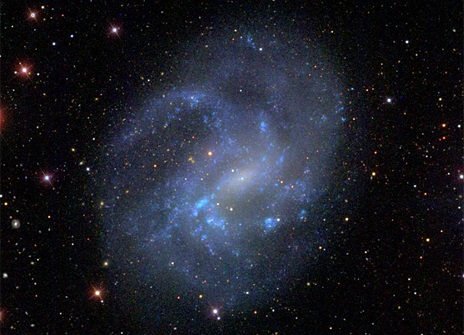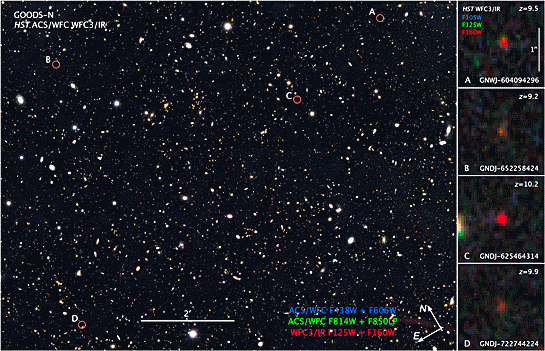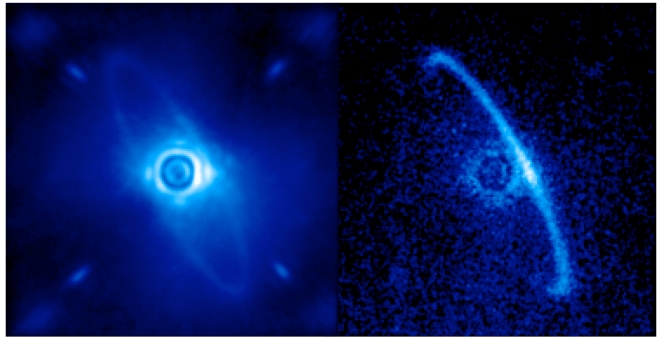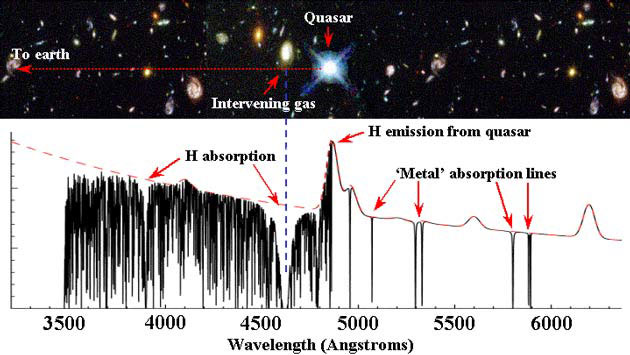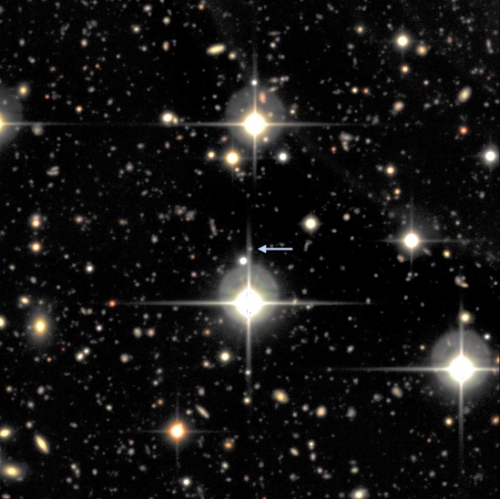
Astronomers discover oldest star
A team of astronomers, led by the Australian National University, has discovered the oldest known star in the universe,…
Read >>Red skies discovered on extreme brown dwarf
A peculiar example of a celestial body, known as a brown dwarf, with unusually red skies has been discovered by a team o…
Read >>Asteroid Diversity Points to a "Snow Globe" Solar System
Our solar system seems like a neat and orderly place, with small, rocky worlds near the Sun and big, gaseous worlds fart…
Read >>Gaia-ESO data show Milky Way may have formed ‘inside-out’, and provide new insight into Galactic evolution
Research on first data release from Gaia-ESO project suggests the Milky Way formed by expanding out from the centre, and…
Read >>U.Va. Study Using ALMA Telescope Reveals Supernova Dust Factory
Galaxies can be remarkably dusty places, and supernovas are thought to be a primary source of that dust, especially in t…
Read >>Swift Satellite observes new, 'exceptionally close' exploding star
An exceptionally close exploding star, discovered on Jan. 21, is the focus of observatories on Earth and in orbit, inclu…
Read >>Distance to remote galaxies can now be measured to 1 percent accuracy
The distance to a set of 1.2 million galaxies that are more than 6 billion light years away from Earth has been measured…
Read >>Newfound Planet is Earth-mass But Gassy
An international team of astronomers has discovered the first Earth-mass planet that transits, or crosses in front of, i…
Read >>Newly discovered three-star system to challenge Einstein’s theory of General Relativity
A newly discovered system of two white dwarf stars and a superdense pulsar–all packed within a space smaller than the Ea…
Read >>Lawrence Livermore 'space cops' to help control traffic in space
A team of Lawrence Livermore National Laboratory scientists are using mini-satellites that work as space cops to help co…
Read >>Massive Exoplanets May be More Earth-Like Than Thought
“Super-Earths” likely to have both oceans and continents
Massive terrestrial planets, called “super-Earths,” are known to be common in our galaxy, the Milky Way. Now a Northwest…
Read >>Innovative handheld mineral analyser – ‘the first of its kind’
University of Leicester academic Dr Graeme Hansford to develop inventive new device in collaboration with Bruker Elemental
The analyser will allow rapid mineral identification and quantification in the field through a combination of X-ray diff…
Read >>Scotland centre-stage in mission to probe origin of the Universe
Scottish scientists will be at the heart of a completely new type of space mission that will detect the ripples in space…
Read >>A rare crash at the Milky Way's core: U-Michigan astronomers could be the first to see it
University of Michigan astronomers could be the first to witness a rare collision expected to happen at the center of th…
Read >>Alive and well inside dwarf galaxies: massive black holes
Dwarf galaxies may be small, but astronomers now know that they can hold massive black holes. Yale astronomer Marla Geha…
Read >>Tiny (but ultra bright) quartet of ancient galaxies takes astronomers by surprise
Combining the power of two major NASA space telescopes, astronomers have found four young, exceptionally bright galaxies…
Read >>Out of this world first light images emerge from Gemini Planet Imager
After nearly a decade of development, construction and testing, the world’s most advanced instrument for directly imagin…
Read >>Quasars illuminate swiftly swirling clouds around galaxies
A new study of light from quasars has provided astronomers with illuminating insights into the swirling clouds of gas th…
Read >>Galaxies in groups are running out of fuel
Astronomers at Swinburne University of Technology and their international collaborators have found evidence that galaxie…
Read >>Powerful Ancient Explosions Explain New Class of Supernovae
Study by UCSB scientist finds they likely originate from the creation of magnetars
Astronomers affiliated with the Supernova Legacy Survey (SNLS) have discovered two of the brightest and most distant sup…
Read >>
There are 385 articles in Astronomy & Space
Astronomy & Space Archive
